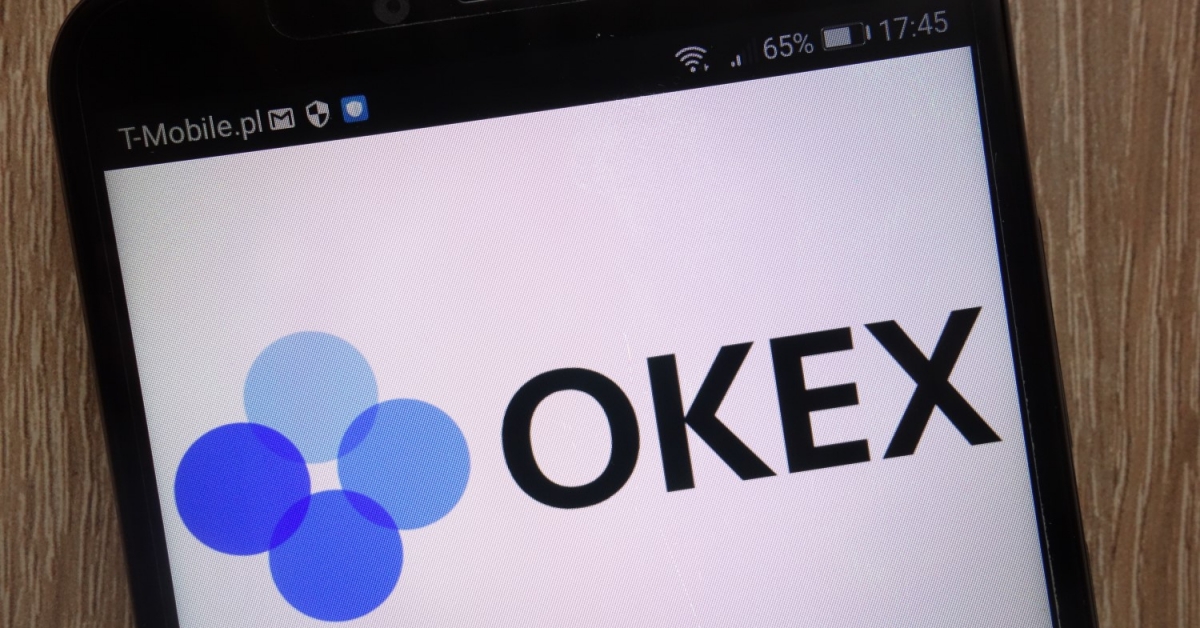The Protocol: Restaking Tokens Are Exploding, and Restaking Isn’t Even Live
/arc-photo-coindesk/arc2-prod/public/LXF2COBSKBCNHNRE3WTK2BZ7GE.png)
Those of us who follow the blockchain space closely know how quickly things can change, including hot stories like this week’s not-so-smooth airdrop of the new STRK tokens from the Ethereum layer-2 network Starknet.
But occasionally a big trend comes along. That seems to be happening now, with “liquid restaking protocols” and their “liquid restaking tokens” or LRTs suddenly drawing in billions of dollars. CoinDesk’s Sam Kessler weighs in on the phenomenon in this week’s feature.
-
Coinbase draws flak as its Commerce payment protocol ends support for third-party self-custody bitcoin wallets.
-
Top picks from our
Protocol Village
column of blockchain tech updates: Solana, Filecoin, COTI, Animoca, Polygon Labs, EOS, Minima, Wicrypt.
-
Where will all those bitcoins come from?
This article is featured in the latest issue of The Protocol, our weekly newsletter exploring the tech behind crypto, one block at a time. Sign up here to get it in your inbox every Wednesday. Also please check out our weekly The Protocol podcast.
Network news
BASE VS. BITCOIN? A series of posts appeared on the social-media platform X complaining that the U.S. crypto exchange Coinbase’s online payment protocol, Coinbase Commerce, didn’t allow payment from self-custody bitcoin (BTC) wallets. CEO Brian Armstrong replied that executives at the company “believe paying with crypto is going to primarily happen on layer 2 in the future and we want to help make that happen.” He added that “I think the market for people paying for everyday items on layer 1 will be pretty small, regardless of what chain (maybe other than Solana).” Currently, the fastest checkout on the company’s online payment protocol, Coinbase Commerce, is “with any ERC-20 on layer 2 (Base, Polygon, etc),” Armstrong wrote. “This includes Ethereum, USDC, wrapped Bitcoin and thousands of ERC-20 tokens.” Base, of course, if Coinbase’s own layer-2 network atop Ethereum, launched last year with much fanfare. Within a couple hours of Armstrong’s posts, Lauren Dowling, product lead for Coinbase Commerce, chimed in to explain that “the product is evolving,” and “the new Commerce product enforces the details of each payment onchain, supports hundreds of assets (native and ERC-20s) across Base, Polygon and Ethereum, & automatically converts payments to USDC onchain at a guaranteed rate to merchants.” Delivering the capabilities on the Bitcoin blockchain “without smart contracts and stablecoins was challenging & we therefore made the difficult decision to remove native Bitcoin & other UTXO support.” According to Dowling, customers can still pay in bitcoin from their Coinbase accounts. At least one notable bitcoiner, Udi Wertheimer of the Taproot Wizards project, came to Coinbase’s defense: “When brian armstrong and Coinbase say that the payment UX with bitcoin is bad, they know what they’re talking about.”
RESTAKING NARRATIVE: In a sign of just how hot “liquid restaking protocols” have become among crypto speculators, the new blockchain projects are hitting major money milestones within weeks of their launches. Liquid restaking protocol Puffer passed the mark of $1 billion in deposits on Tuesday, according to DefiLlama, fewer than three weeks after opening to users on Feb. 1. Meanwhile Kelp DAO, the third-largest liquid restaking protocol, introduced the KEP or “kelp earned points” token, allowing users to trade the otherwise illiquid EigenLayer points and rewards. What appears to be at the heart of it all is crypto “points farming” – essentially traders trying to score points doled out by the projects to early users; the theory is that these points will entitle them to receive tokens in an eventual airdrop; the risk is that these promises are kept quite vague.
-
Stellar, a payments-focused blockchain created as a fork of the Ripple protocol in 2014, entered the era of programmability, adding Ethereum-style smart contracts through the two-years-in-the-making “
Soroban
” project.
-
Starknet, the Ethereum layer-2 network based on zero-knowledge cryptography, had a $1.4 billion market capitalization after the highly anticipated (and
controversial
) airdrop of about 700 million of the project’s STRK tokens. The first day of trading was a bit
ugly
, though, with the
token’s price
sliding to around $1.91 after initially
climbing as high as $5
.
:format(jpg)/cloudfront-us-east-1.images.arcpublishing.com/coindesk/6RAITWIAUFCSTINTXALQCSUBZI.png)
Protocol Village
Top picks of the past week from our Protocol Village column, highlighting key blockchain tech upgrades and news.
-
The Solana blockchain has integrated with Filecoin, according to the Filecoin team: “Solana is utilizing Filecoin to make its block history more accessible and usable for infrastructure providers, explorers, indexers, and anyone needing historical access. By leveraging Filecoin’s decentralized storage capabilities, Solana can achieve data redundancy, scalability, and enhanced security while staying true to its decentralized ethos.” CoinDesk 20 assets:
SOL
,
FIL
-
COTI
, a layer-1 blockchain, unveiled a new encryption paradigm with garbled circuits, according to the team: “This is the first time garbled circuits have been successfully deployed on the blockchain, bringing on-chain privacy with a computation speed up to 1,000 times faster than other encryption systems like fully homomorphic encryption (FHE). Garbled circuit technology is a form of multi-party computation (MPC), where specialized cryptographic methods allow a group of parties to collaborate, performing a specific computation that requires their private information, but does so without disclosing the input information to any other party.”
-
Humanity Protocol, launched by Human Institute with Animoca Brands and Polygon Labs, emerged from stealth as a new zkEVM layer-2 blockchain for Web3 identity validation. According to a press release, the project relies on palm recognition tech “as a less invasive identity verification alternative to methods like iris scans.” The protocol was built from the chain-development kit Polygon CDK, with zero-knowledge proofs and a “Proof of Humanity” consensus mechanism.
-
EOS introduced the Leap 6.0 upgrade, “transforming the ecosystem with the Savanna consensus algorithm,” according to the team: “This upgrade delivers instant finality and a 100-fold transaction speed boost. Scheduled for release on July 10, it enhances security, user experience and decentralization. Infrastructure providers and partners should note key dates, with the hard fork set for July 31.”
-
Minima, a layer-1 blockchain focused on decentralized physical infrastructure network (DePIN) solutions, is partnering with Wicrypt, a smart WiFi network, according to the team. The plan is “to democratize and make internet access cheaper for everyone. Wicrypt will embed Minima nodes into WiFi routers, which will then be able to grant network access to Minima users. By running Minima nodes on Wicrypt routers, each router will become an active node, thus decentralizing and making the network’s infrastructure more secure and resilient.”
Liquid Restaking Tokens or ‘LRTs’ Revived Ethereum DeFi. Can the Hype Last?
:format(jpg)/cloudfront-us-east-1.images.arcpublishing.com/coindesk/3VNWEZNXVNB4JNX6CEBMA4FJ54.png)
Decentralized finance on Ethereum is seeing a big resurgence, with the familiar promise of high yields returning thanks to a new breed of crypto asset: “liquid restaking tokens,” or LRTs.
In the past month alone, billions of dollars have flooded into new Ethereum-based liquid restaking projects like Ether.Fi and Puffer, each with their own LRTs. The upstart platforms are in a heated turf battle to supplant Lido’s staked ETH (stETH) token as the asset of choice for decentralized finance (DeFi) traders.
The entire trend pivots off the development of a new protocol named EigenLayer, which launched a first-of-its-kind “restaking” system to Ethereum last June. The platform is building a solution to let blockchain apps and networks borrow Ethereum’s security system, and it drew more than $1 billion in new deposits in a single 24-hour period this month. Now, the total amount is over $7 billion, meaning the platform has singlehandedly amassed more than 1.5% of all ether (ETH) tokens in circulation, according to DefiLllama.
These liquid restaking platforms serve as middlemen between users and EigenLayer: The platforms “restake” user deposits with EigenLayer, and they hand out newly generated LRTs in exchange – so users can keep trading even if their deposits are being used for restaking.
Money Center
Fundraisings, deals and grants
-
QED
, describing itself as “the world’s first ZK-native blockchain protocol,” has secured $3 million in funding, to propel DeFi on Bitcoin.
-
Starter International Holdings
has partnered with Atlanta Blockchain Center, revamping its acclaimed crypto launchpad to champion diversity and innovation. According to the team: “The collaboration introduces Base Chain support, aiming to fill the VC industry’s diversity gap. With a history of over 60 IDOs and $45M raised, Starter is set to bridge blockchains and communities, fostering a more inclusive blockchain ecosystem. Discover how this partnership is redefining blockchain fundraising and empowering minority founders at https://starter.xyz.”
-
Y Combinator (YC), the Silicon Valley incubator, has listed stablecoin finance as a category in its new and updated list of areas it would like to deploy funds in, according to its request for startups (RFS) list
released last week
.
Regulatory, Policy and Legal
Where will all of those bitcoins come from?
Billions of dollars keep flowing into the recently approved spot bitcoin ETFs – earmarked to purchase BTC. Some analysts are starting to map out where all of those bitcoins might come from. Alex Leishman, CEO of the bitcoin-focused financial firm River, tweeted a chart suggesting that the spot bitcoin ETF flows could amount to nearly 1 million BTC within a year – for a cryptocurrency whose supply is capped at 21 million, and the vast majority of that already mined. Gemini’s Cameron Winklevoss tweeted that “Bitcoin ETFs are taking 10x more bitcoin off the market than are being minted daily,” and if the inflows hold up through this year’s quadrennial mining-rewards halving, expected in April, “then bitcoin ETFs will be taking 20x more.” The crunch might get even more severe if bitcoin’s price move past $50,000 draws in more retail punters. “BTC reclaiming the critical $50K mark will also entice sidelined investors to reconsider their BTC positioning leading up to the halving,” analysts at Galaxy Digital’s wrote. River’s Leishman provided a schematic purporting to show various categories of bitcoin owners, and their holdings:
:format(jpg)/cloudfront-us-east-1.images.arcpublishing.com/coindesk/H6YAHLXAFZARZLB36SZRIYMRSA.png)
Calendar
-
March 12-13:
Sub0 Asia
, Polkadot developer conference, Bangkok
-
June 11-13:
Apex
, the XRP Ledger Developer Summit, Amsterdam.
-
July 8-11:
EthCC
, Brussels.
Edited by Bradley Keoun.








